For a long time, the only digital rangefinders on the market were Leicas. Now there’s Pixii. A screen-less, APS-C sensor, “connected” rangefinder that’s quite a lot less cash than anything from Leica and comes from a startup company with ideas of disrupting the marketplace with something a little different.
I’ve had my Pixii for a good while now. I was one of the first people to try one, and have been an advocate of it since. I love what this camera brings to the marketplace, and moreover what it brings to the table for me. It’s also changed a lot as a camera since launch with a series of significant upgrades, so I thought it about time that I finally followed up my “primer” article with some more in-depth personal thoughts and opinions.
At the time I wrote that article, I was sharing photos of my Pixii on instagram and getting a lot of comments from people who had never used one – in fact never even seen one – and were picking the camera apart, declaring they would “rather buy” x, y or z, and that Pixii as a brand would likely fail. I’ll save you the rants about how frustrating I find that sort of response – especially the latter bit – but I do want to point out that nearly a year on from publishing the article, not only are Pixii still going, but they have just updated the camera with a series of significant upgrades, some of which are based on the feedback that us early adopters fed to them. I’m not saying this to be smug (much), it’s still early days for these guys – especially when you compare them to the likes of the big boys in the industry – but it is really pleasing to see a startup in this industry making a success!
It’s also pleasing as an owner of a Pixii. Since I recently received mine back from having these upgrades, I now have a camera that’s better than the one I originally bought without the expense of completely replacing it. It’s had a new sensor, a new USB-C charging port, now shows a wider range of information in the viewfinder and has had a fairly significant firmware upgrade that seems to have made it a lot more stable. It’s still the same concept, and still provides a very similar user experience to before, but now it just feels that little bit more compete as a camera. I will get onto these upgrades and what they mean for Pixii in a moment. But before I do, I just wanted to write something to tackle something of what I see as a creeping misconception about this camera, and indeed how I shoot mine as a camera.
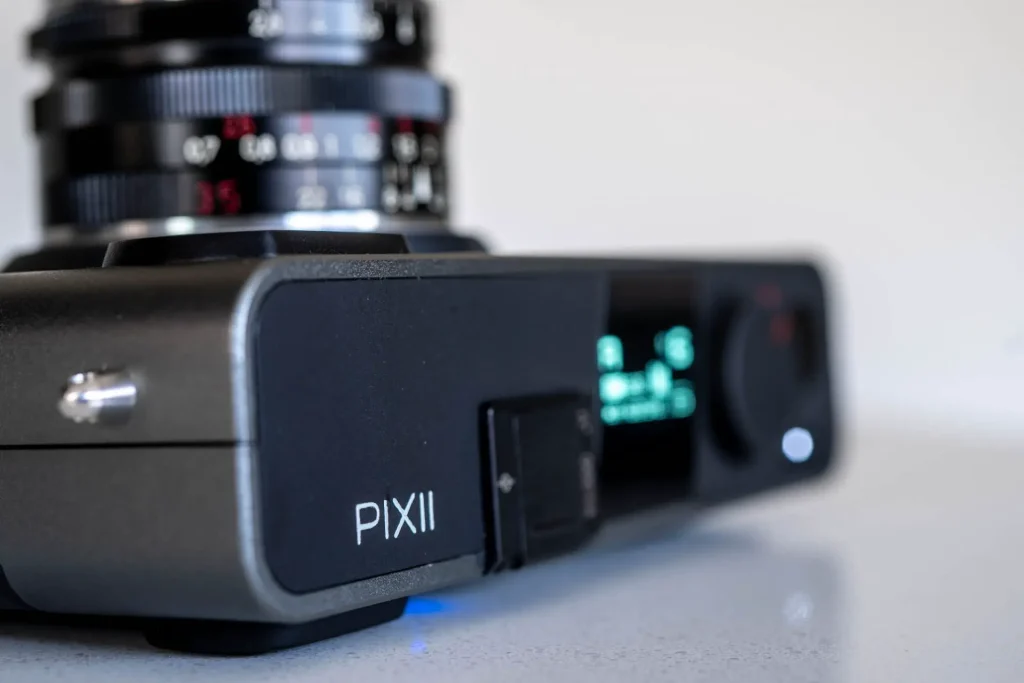
The Misconception about Pixii
The problem Pixii have is that the camera they make isn’t really like anything else on the market. Of course, some comparisons could be drawn between it and the the Leica M10-D. But the M10-D is now discontinued, was around twice the price, full frame, doesn’t have the OLED screen on the top and – if my M10-P is anything to go by in terms of well it works the corresponding app – the connectivity isn’t as good. But apart from that, Pixii stands alone in the marketplace.
The issue with this is that it seems to need more explaining as a concept to people. This is why I wrote that primer article last year. I wanted to add to the explanatory narrative from a 3rd party perspective. Actually, a year on, I think more people do get it more. I see a lot less confusion on social media, and a lot more people showing interest in the concept. But there is still some questions out there, and it seems to me that a big chunk of this is down to this idea of it being a “connected camera”.
Always – but not all ways – connected
The more I shoot my Pixii, the more I find it makes sense to me. That said, I find myself falling into a user process that I differs a little from how I suspect at least some others photographers use theirs. What I think is relevant about this is that I imagine many see this camera as something of a one trick pony. A camera that’s designed to be used in one specific, prescribed way. It is after all so simple and so reduced in its core functionality, surely there’s only one way to use it…?
I had this perspective reinforced recently after I posted about it on instagram and I was asked a question about what happens if the camera and or app stops being supported. I think this is possibly a concern for some people. Pixii are a startup digital camera manufacturer – one of the only companies in the world that can call themselves that. They are pitching the camera as something very different to what else is on the market too, so what if the marketplace doesn’t respond positively to this and they they fail? How long will it be before the camera bricks due to a lack of app support?
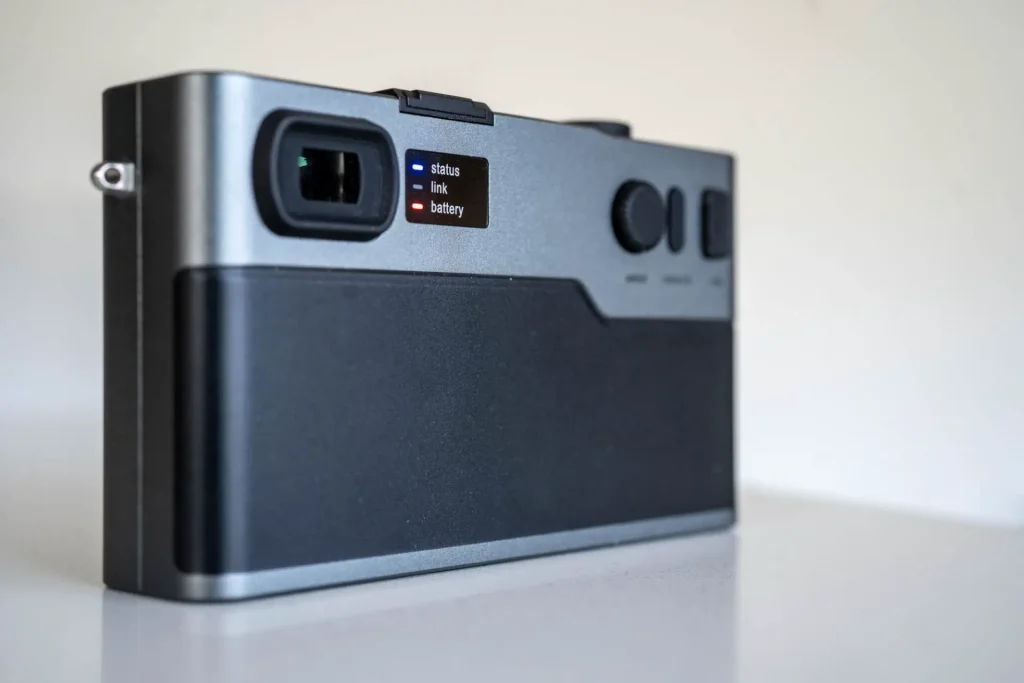
The answer to that question is simple. Never. The Pixii camera isn’t reliant on the app to work. The app just adds another level of functionality. Without the app, the camera can just be used as a screen-less digital camera that can be connected to a computer as if it’s a normal hard disk drive to extract the photos.
This potential misconception about what Pixii is and does has, I believe, come about through the marketing approach Pixii take. For right or wrong, Pixii is largely touted as a “connected camera” that works with a smartphone. To some, this seems to imply that it somehow relies on a connection to a smartphone to function. The headline user experience is presented as such that you connect the Pixii to your phone, shoot images that are then beamed to your phone, allowing you to then share them from the phone (perhaps via a smartphone photo editor) to social media.
This, to a greater or lesser degree, I think, is David Barth’s vision, and because of that vision, it does make a lot of sense for the camera to be touted this way. But, despite this vision, and despite the limited core functionality of the camera, there is a little bit of a halfway house between the “connected” and not-connected ways of shooting it that I think is important to understand.
My Pixii Shooting Style
This halfway house is also exactly how I use my Pixii. I’m personally not interested in using my phone to edit photos beamed from the camera. It’s true that Pixii will beam DNG files, and that those files can be edited on the phone or tablet. But that’s not my workflow.
My workflow, be it film or digital, involves shooting the camera, putting the photos onto the computer, editing them in Lightroom, sharing them on Flickr for archival purposes and then eventually sharing them on my website etc. Of course, the bit in between pressing the shutter button and opening the photos in Lightroom is different depending on whether I’m shooting film or digital. But my choices within this part of my shooting experience are where I get a lot of the joy I do from taking photos.
When I shoot film, I like the fact that I don’t see the images there and then on the back of the camera. I also like the simplicity of the cameras. When I am shooting digital, I enjoy the immediacy of it, as well as getting something positive from the fact that I can see that I have actually got the shot that I wanted. I actually have no preference for one experience over the other, it completely depends on my mood. And this is where and why the Pixii works for me.
With Pixii I get pleasure out of the simplicity of the camera and the lack of screen on the back. The controls are very limited and, because it’s a rangefinder, it’s manual focus and either aperture priority or fully manual with a built in meter. When shooting it – but for the fact that it doesn’t really give any mechanical feedback like some of my favourite film cameras do – it feels like I’m shooting film. But, alongside this analogue-like experience, I still have the option to quickly preview my images to check for composition and exposure.
As soon as I switch a Pixii on it seamlessly connects to the app and every time I take a photo it beams a low resolution version to the phone. The result of this is that should I get that moment where I doubt or worry about exposure or composition, I can open the app and find the images waiting for me to inspect. This is the key part of the experience I find enjoyable. It really makes this camera feel like it takes a bit of what I enjoy about both mediums and puts them into one camera.
 Norah loves having her picture taken and quite often demands it. She then demands to see the picture – I was able to quickly show her this shot on my phone.
Norah loves having her picture taken and quite often demands it. She then demands to see the picture – I was able to quickly show her this shot on my phone.Of course, were I to feel inclined, I could later sync the DNG to my phone, edit and share it. Or I could ignore the photos on it completely and just come back to them next time I’m near my computer. But I don’t do either of those things, ever. I use it as I have described every time, as that is exactly what suits me, and is exactly the appeal of the camera to me.
Pixii offers me a halfway house between the “connected” headline function and features and a not-connected way of shooting. It also offers me a user experience that feels like a halfway house between digital and film. It doesn’t work for every shooting experience, but when it does work, it really feels like an enjoyable way to take photos.
The Upgrades
So what about the upgrades? This article was spurred on by the fact that I received the upgraded camera back from Pixii and I wanted to help get the word out that it is now better than ever. And it is, definitely, a better camera than it was when I first got it. Just for reference, the camera is still just called Pixii, the upgraded version is just the “New Pixii” – or if you are going to be super geeky, this is the ‘A1571’ with the original being the ‘A1112’.
A New Sensor
The new sensor is possibly the biggest upgrade in terms of headline specs. It’s now 26mp – more than twice the 12mp sensor it came with originally. It’s also a bang up to date sensor from Sony that’s found in some other contemporary cameras. The result of that, is – unlike with the original camera – many users now won’t bump up against a lot of noise when shooting it in lower light as was the case before. Though, I should point out that it isn’t as clean of noise as some modern cameras, it does a plenty good enough job for me.
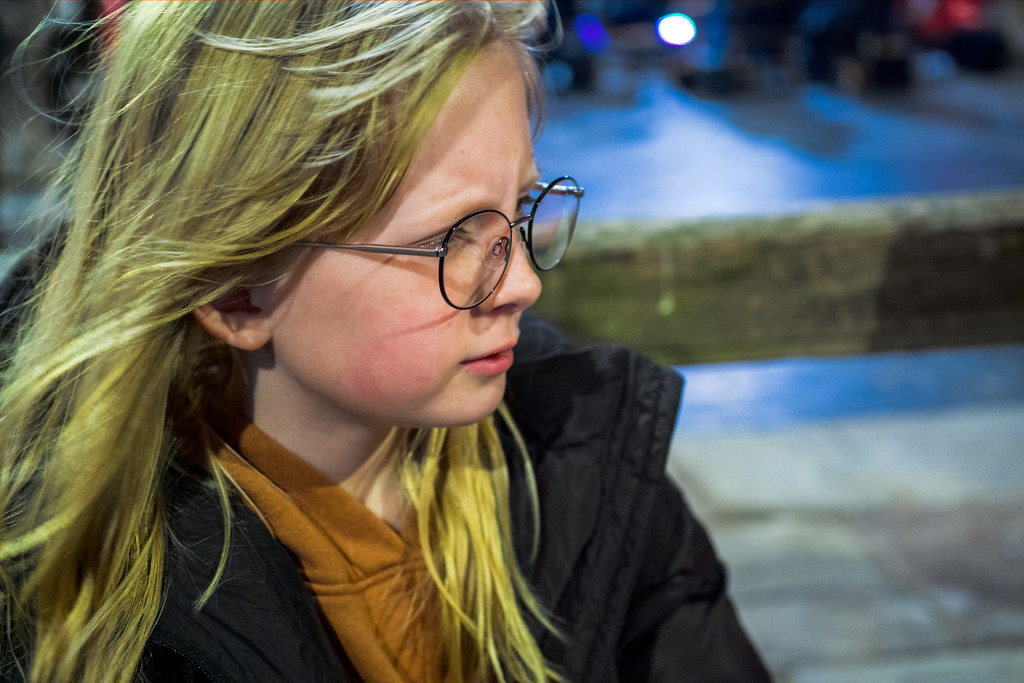 3800 ISO – Pixii and Zeiss 35mm 2.8 ZM
3800 ISO – Pixii and Zeiss 35mm 2.8 ZMIt should be said, it’s still an APS-C sized sensor which seems to rub a few people up the wrong way. But, personally, I’m not too fussed. Perhaps this is because I also have access to a full frame rangefinder, or perhaps it’s because I used to shoot an Epson R-D1 quite happily. Either way, I like the crop sensor. My little Zeiss 35mm C-Biogon is a great match to the camera in terms of the size. Cropped it gives me around a 50mm equivalent lens with a little more depth of field. Ideal for 50mm field of view snaps. I’ve also been using it with my Omnar 26mm f/6 which translates to a ~40mm with even more depth of field.
Of course, your mileage might vary, and honestly were it not for the fact that I also have a couple of other full frame cameras I might feel differently too. But having the Pixii as an option really works for me. Sometimes having more depth of field and smaller lenses with longer effective focal lengths just works, and Pixii feels like a camera it just works well with too!
A New Viewfinder
Next up is the new viewfinder. I’m actually not sure what they’ve done to it, technically speaking, but the frame lines are now brighter, there seems to be less internal reflections and the information displayed in the viewfinder is more useful. It now shows pretty much any info you want it to, shutter speed, ISO, exposure compensation, camera mode, how many frame you have left, and you can even operate and view the entire menu within the viewfinder should you wish. Shutter speed and ISO have been my choice for what info I like to have visible.
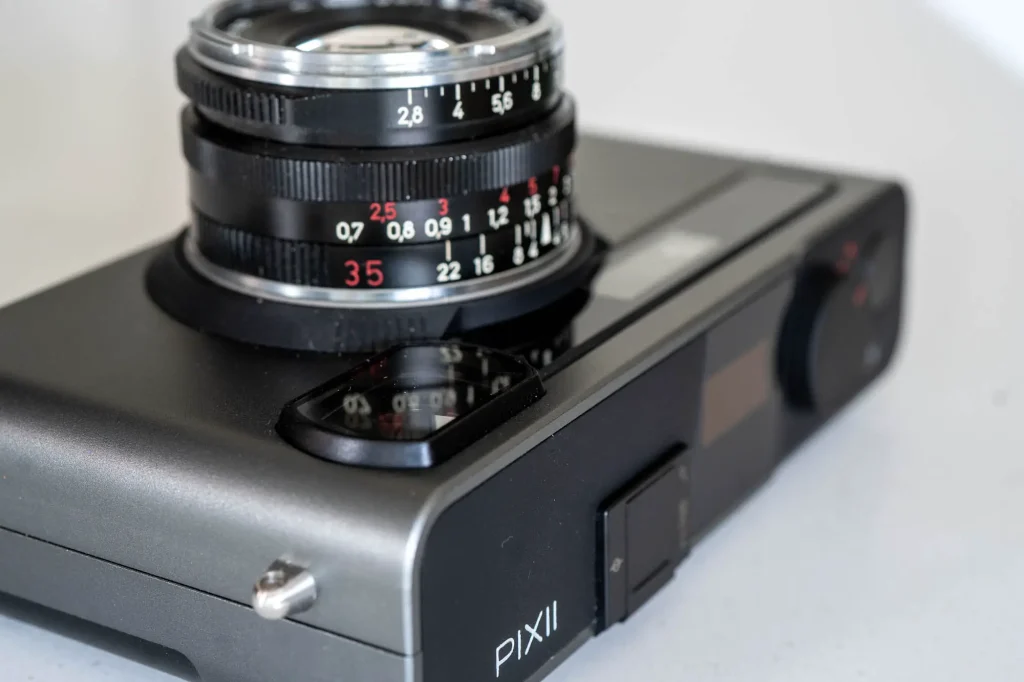
USB-C Charging and Connectivity
The final hardware upgrade is an upgrade from the previous USB mini port to a USB-C port. Actually, as I’ll get to in a second, this hasn’t been plain sailing for them, but I still much prefer it over the old style USB mini port which made the camera feel a bit dated to me.
Firmware
The firmware of the camera has also been updated. Though, actually, they’re always updating it. I couldn’t count the updates I’ve done since I’ve had a Pixii in my possession. Perhaps not a surprise for a new camera from a new manufacturer…? The result of this is largely that the camera and app seems more stable in use. Sometimes before it would do odd things like shut down for no reason or the app would just refuse to communicate with the camera. These things just don’t seem to happen now. There are a few niggles, but I’ll get to those in a second.
More Consistent Exposure
One big factor in the firmware update – that’s perhaps also a product of the new sensor – is more consistent exposure. Previously, Pixii had a habit of throwing an exposure curveball at you maybe 1 in 10 frames. For no reason at all it would heavily overexpose. This doesn’t seem to happen any more either.
The Upgrades and Me
All of these upgrades have made a big impact on this camera. The USB-C means it just feels more compatible with my life, the viewfinder makes Pixii more usable, the sensor makes it more useful, and of course more consistent exposure is very valuable when you don’t have a screen on the back of the camera. All this adds up to a camera that feels more complete than the prototype and subsequent early versions that I shot before.
That said, actually, I didn’t really mind not being able to use it much in lower light before, but now I can, I must concede that I like the camera slightly more. I tend not to fuss about low-light capability with digital cameras much. I don’t shoot much in low light these days, and if I want to, I have other cameras (my Sony A7iii) that do a job so well that I’d just pick them over the Pixii anyway for the most part. But, it’s been nice not to have to think about the limitation as much. Especially as I’ve received the upgraded camera in the winter.
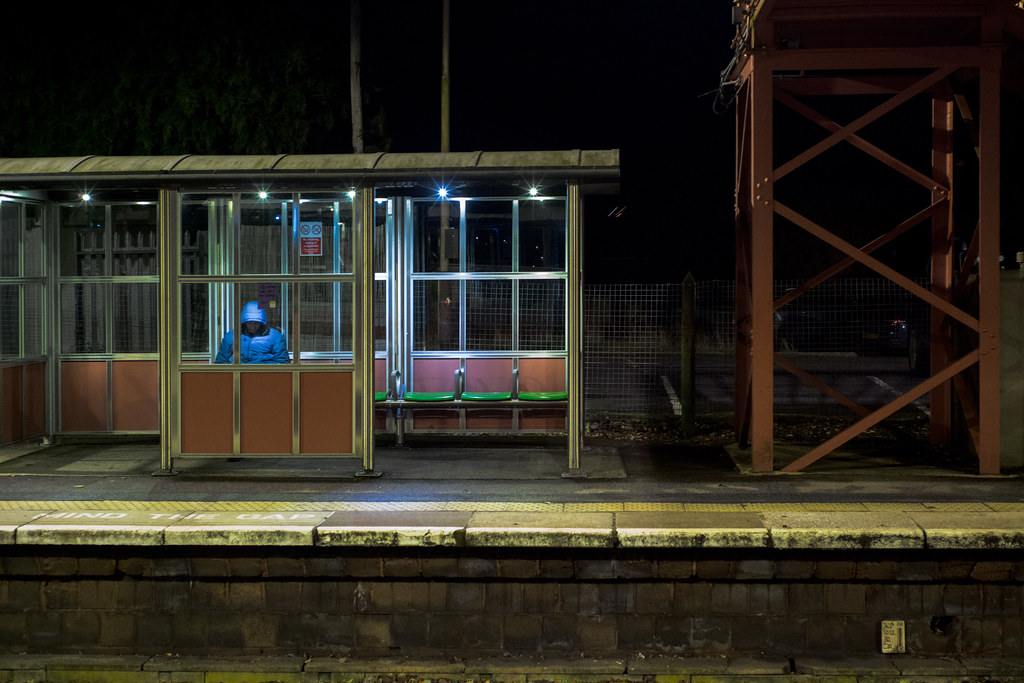 Pixii and Zeiss 35mm 2.8 ZM
Pixii and Zeiss 35mm 2.8 ZMStill a few minor issues
For all this positivity, there are still a couple of issues I have with Pixii – though I should add, none of them feel like dealbreakers to me, especially given how I use the camera. Software/firmware first.
USB-C Issues
This is probably the biggest one. It’s also probably the one that frustrates me the most since I practically nagged David when it came to the USB-C port. Connecting to my Mac, for reasons that David has explained, but that I don’t really understand, about 30% of the time, it just deosn’t work. The other 70% it connects fine, but sometimes it can also take a moment to connect so that annoying issue where you pull out the connection just as connects happens. Then your back into the 70/30 will it won’t it connect issue. This is apparently just a Mac issue, and something Pixii are working on, so fingers crossed it won’t stick around.
Wifi Connectivity Issues
The bluetooth connection for beaming low resolution files from the camera to the phone works pretty flawlessly. Unfortunately, the wifi connectivity when on the go is a little fiddly. It will still connect to the phone via the phone’s hotspot, but it won’t connect as seamlessly as the bluetooth does. Obviously, this isn’t an issue for me, but for anyone wanting to shoot, edit, and share on the go, it might be a little more fiddly.
Colour & White Balance
Colour science is a big deal in the world of digital photography. A lot of people won’t ever have need to think about it. Shoot a Fuji, Canon or Nikon camera and you’re perhaps more likely to just get on with the colours. On the other hand, Sony… well, depending on the person, you might still find the colours out of their cameras to be a bit green. Pixii are also quite new to this colour science game, and sometimes it seems to show. They do have a few different colour profiles, that I must admit I haven’t tried properly yet, but on the standard profile I’ve been using I’ve found the colours can be a little oversaturated.
As an extension of this, I also find that the auto white balance can go a bit bonkers sometimes, and the sliders in Lightroom also don’t match up to expected values per the weather/lighting in the image For example, a lot of the sunshine shots here were set to ~10,000k and +80 on the tint scale out of the camera. The more odd thing is, they look quite nice for it…
 Pixii and Zeiss 35mm 2.8 ZM
Pixii and Zeiss 35mm 2.8 ZMI should say though, none of these colour “issues” have really presented me with a problem. Because I shoot DNG, I have found I can tweak the colours to get a result I am happy with. I’d expect the same to be the case for others too. Experimenting with colour profiles is also an option, but again, I haven’t explored that yet.
Edit: The day before publishing this, I mentioned to David that I was having some issues with colour. In response to this, he sent me a sneak preview of a “new standard” colour profile that at first glance seems to go a long way to fix what I have written in the above paragraphs. Rather than edit everything I’d written – not least because it was all true when I actually shot and wrote about my experiences – I have decided I will write a follow up piece sometime early next year about my findings with the new colour profiles when they are properly released. Here’s a version of the above image with the new profile this came with much more expected white balance numbers too!

Rangefinder Patch
I also have a couple of minor lingering concerns from my first interaction with the camera. The first is the RF patch. It’s actually pretty good, it’s just not as good as the RF patch in my Leica’s. It has a short effective base length and the secondary patch isn’t as bright as a Leica one. But, it’s better than every 1970s/80s fixed lens rangefinder I have tried, if that gives you a scale of quality…?
For me, I haven’t found this to be too much of an issue. I’m only shooting it with slower lenses, and mostly in daylight. Actually, ironically, I have found I can see the RF patch better in lower light, though that is likely just a product of subject contrast. One way or another, perhaps something to have in mind if you are expecting a Leica-quality rangefinder patch.
The Shutter Experience
My final beef is actually something that doesn’t bother me, but I can image that it would bother other people. The shutter button. This camera has no mechanical shutter, just electric. This does mean the shutter can fire up to 1/32,000th of a second, but it also means there is no feedback from the camera when you press the button. They have included a very subtle shutter noise, but it’s only really audible in quiet environments.
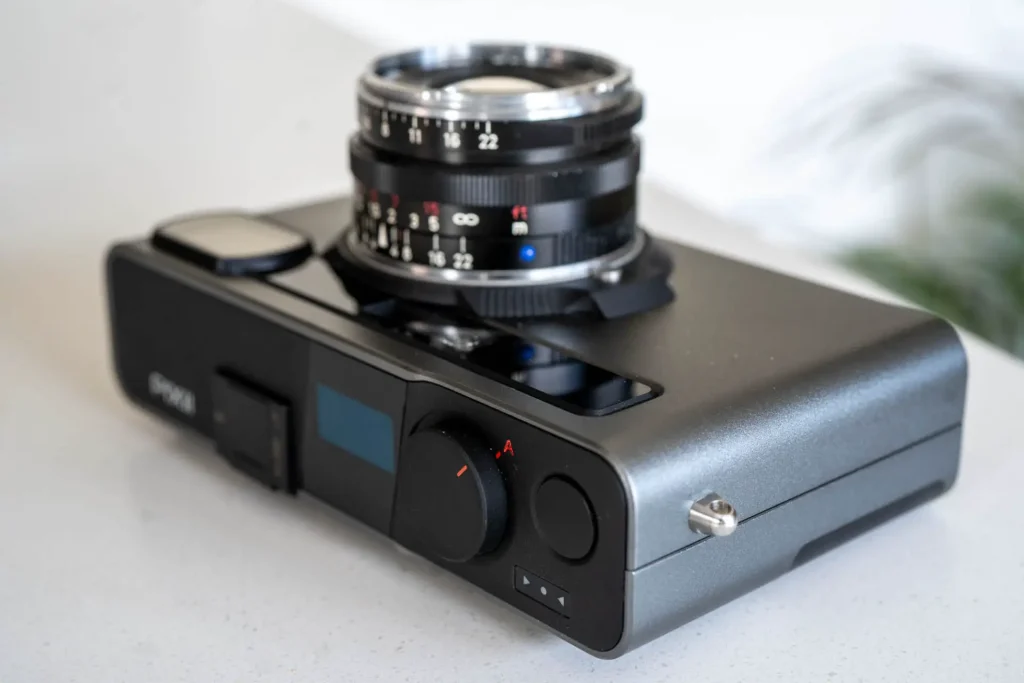
The button itself doesn’t give much feedback either – again, it’s just electric. It’s a bit like the shutter button on some compact cameras. There’s definitely a half and full press, but the feel of the difference between them is quite subtle. I am totally used to it now.
More Features I Really Like
Before I share my closing thoughts, it seems only fair that I should take the opportunity to warble on about some of the other stuff I really like about Pixii. This is the stuff that I have liked since I first tried it.
Industrial Design
To begin with. Just look at it – it is a beautiful bit of industrial design in my opinion! It fits my design ethos – it’s not overly designed, but has enough about it to look really good. It feels good in the hand too. I have read some people commenting about the position of the shutter button being too close to the edge of the camera. In theory, I can see their point, but in practice, I never notice the issue at all.
Monochrome DNGs
And then there’s the fact that it does black and white DNGs. Of course this isn’t as pure as a Leica monochrom that can’t do colour, but it is a true RAW monochrome DNG that plays nicely in Lightroom. And regardless of the fact that the camera can do colour, there is still something a lot of fun about setting it to shoot knowing that the files you get can’t be reverted to colour. I find this especially fun in combination with that fact that the camera has no screen.
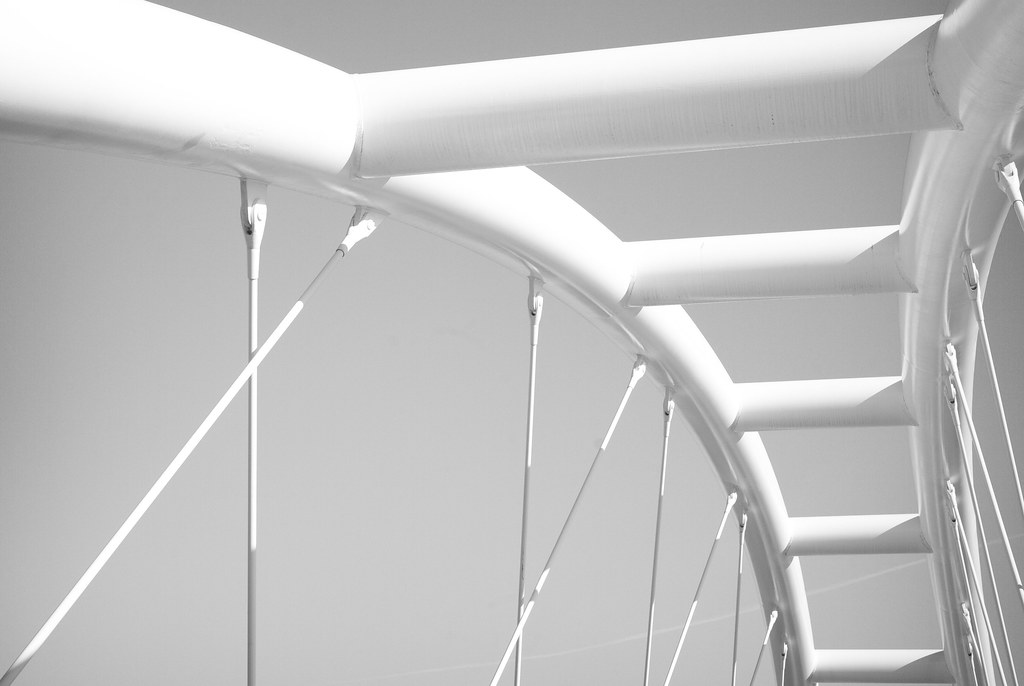 This was actually taken with the original sensor – I shot a few of this bridge, and really enjoyed this experience
This was actually taken with the original sensor – I shot a few of this bridge, and really enjoyed this experienceSimple Menu and Controls
And then there’s the menu system. One button, and one dial on the back, and it still manages to seem easy to use. Everything in the menu makes sense, and even the app interface is pretty good. I couldn’t begin to count the amount of times I have mentioned issues I have with cameras having too many buttons or being too complicated on this website. I love my simple cameras, Pixii is definitely a simple camera!
Ongoing support and updates
The final thing that I really love about Pixii is the updates. I’ve touched on this a few times, but even whilst I have been writing this, I’ve had a few characteristically enthusiastic text messages from David about stuff he’s working on.
And that’s not the end of it either, both short term and long term, firmware and hardware, David has plans. The Pixii platform, as they have proven, is upgradable, and there’s a lot to be said for that in a world where we are otherwise so used to just completely replacing our digital cameras every year or so.
Photos
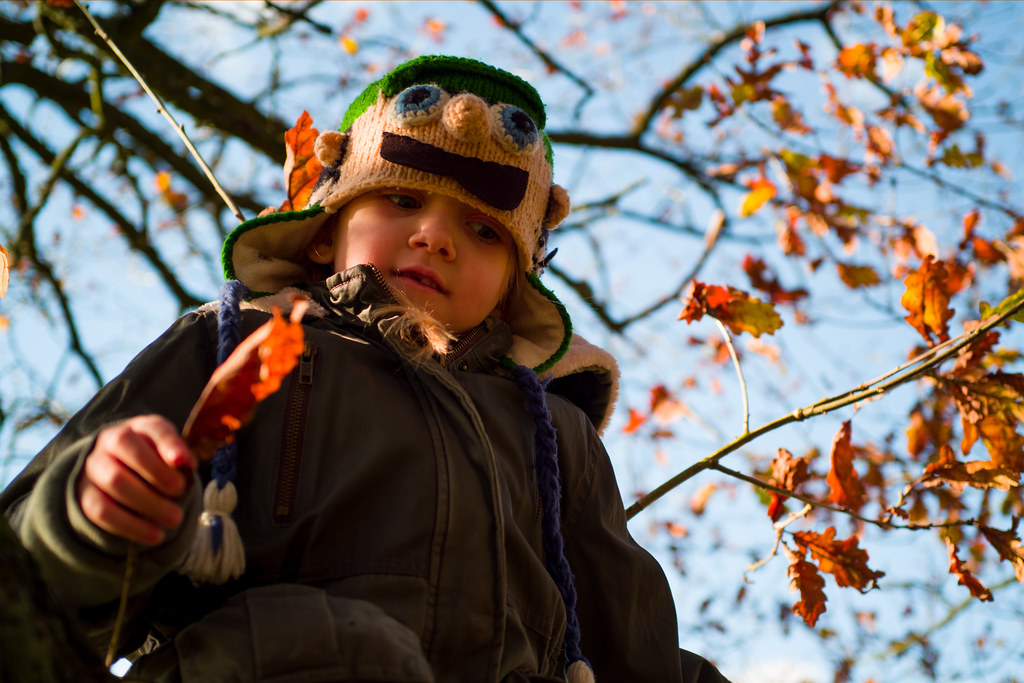 Pixii and Zeiss 35mm 2.8 ZM
Pixii and Zeiss 35mm 2.8 ZM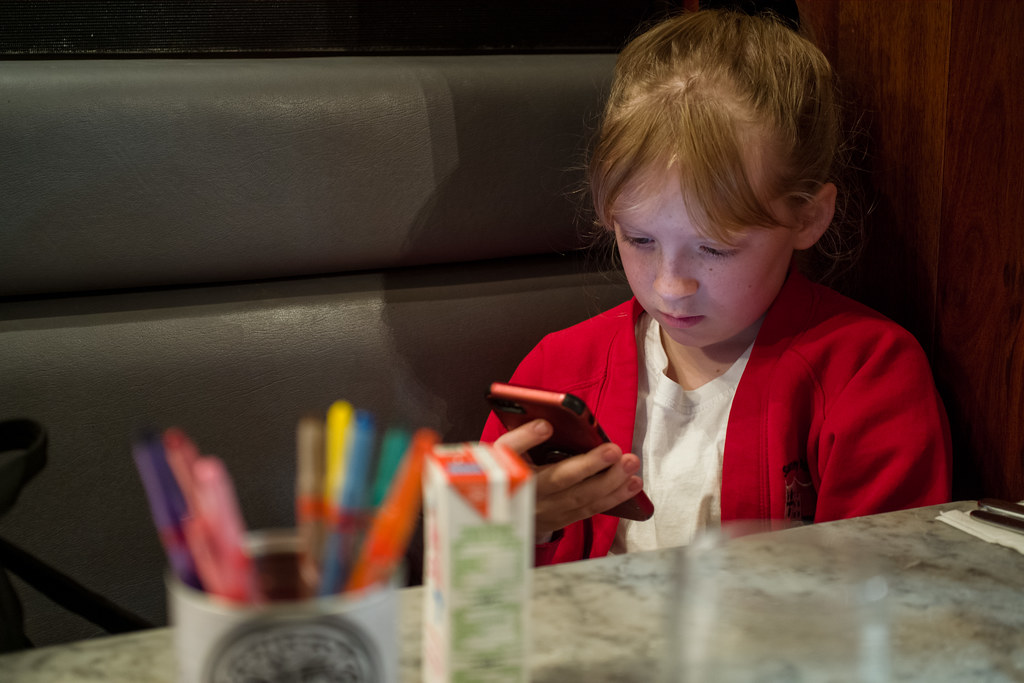 Pixii and Zeiss 35mm 2.8 ZM
Pixii and Zeiss 35mm 2.8 ZM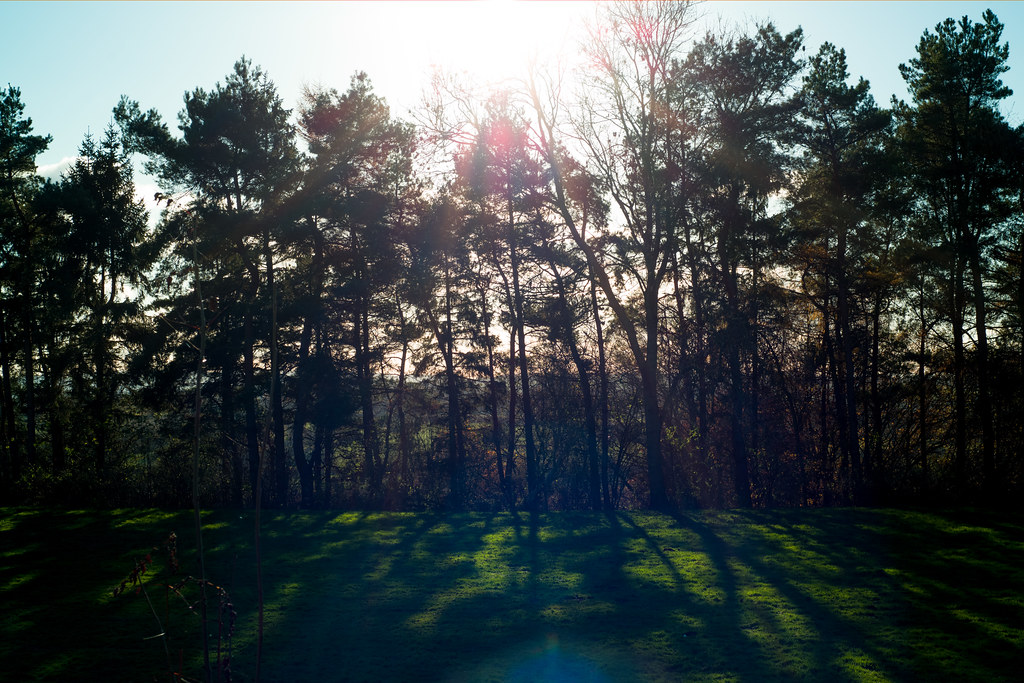 Pixii and Zeiss 35mm 2.8 ZM
Pixii and Zeiss 35mm 2.8 ZM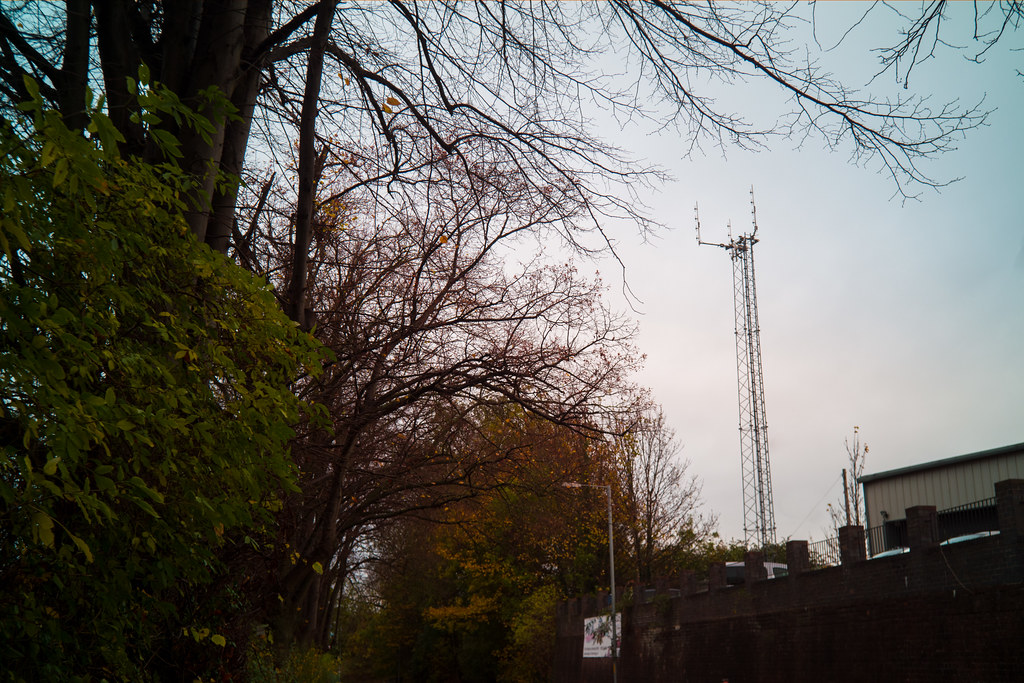 Pixii and Omnar CN26-6
Pixii and Omnar CN26-6Some Closing Thoughts
I usually title this section of my articles ‘Final thoughts’. Today I’m going with “closing thoughts” as I can’t see this being the last thing I write about this camera. This feels like an update article, and since I expect more updates will come, I expect I will be back with more to say. I know David has a lot of plans to still roll out.
This is a big part of what has been fun about shooting and owning this camera over the last nearly-two-years. It’s been a journey from beta testing, through owning a first version, through lots of firmware upgrades, to eventually now shooting an upgraded version of the camera.
Would I have recommended this path to everyone who has ever shown interest in Pixii? No of course not. David wouldn’t have had enough prototypes to go round for a start. There have also been a few ups and downs since the first version of the camera came out – nothing that Pixii haven’t fixed, but certainly some that might have frustrated one or two users. The random exposure issues specifically come to mind. It’s been a lot of fun for a camera geek like me though!
We seem to be through all that though now too. Yes, it’s still not perfect, but it’s possible to pick holes in most production cameras. On this website I have moaned about the fact that Sonys have too many buttons, the Fuji connectivity software doesn’t work at all, and for years their images didn’t really play nice with Lightroom. Then there’s the fact that Sigma make you use proprietary software, and don’t get me started on Ricoh’s build quality. The point is, no camera is perfect. Pixii, like all cameras has design choices that will put people off.
What makes it all the more interesting though is that unlike most cameras from most other brands, it makes no apology for what it is as a camera. Pixii doesn’t have a preview screen, it’s m-mount but has an APS-C sensor, and it offers this arguably completely unique middle ground between geeky and high tech, and yet somehow gives an almost-analogue feel when you’re using it. It’s a “connected” camera with its OLED screen and electronic controls, and at the same time, its manual focus and relies on a design of focusing aid that dates back maybe even as much as a century. In short, it is a bit crackpot, and it’s certainly very niche, but somehow it works. Somehow Pixii manages to bring a completely unique user experience to the table. And that’s where the appeal is for me. I enjoy the user experience for myself, a great deal in fact, but I also have a lot of respect for a camera manufacturer that is trying to break the mould!
More here – pixii.fr
Share this post:
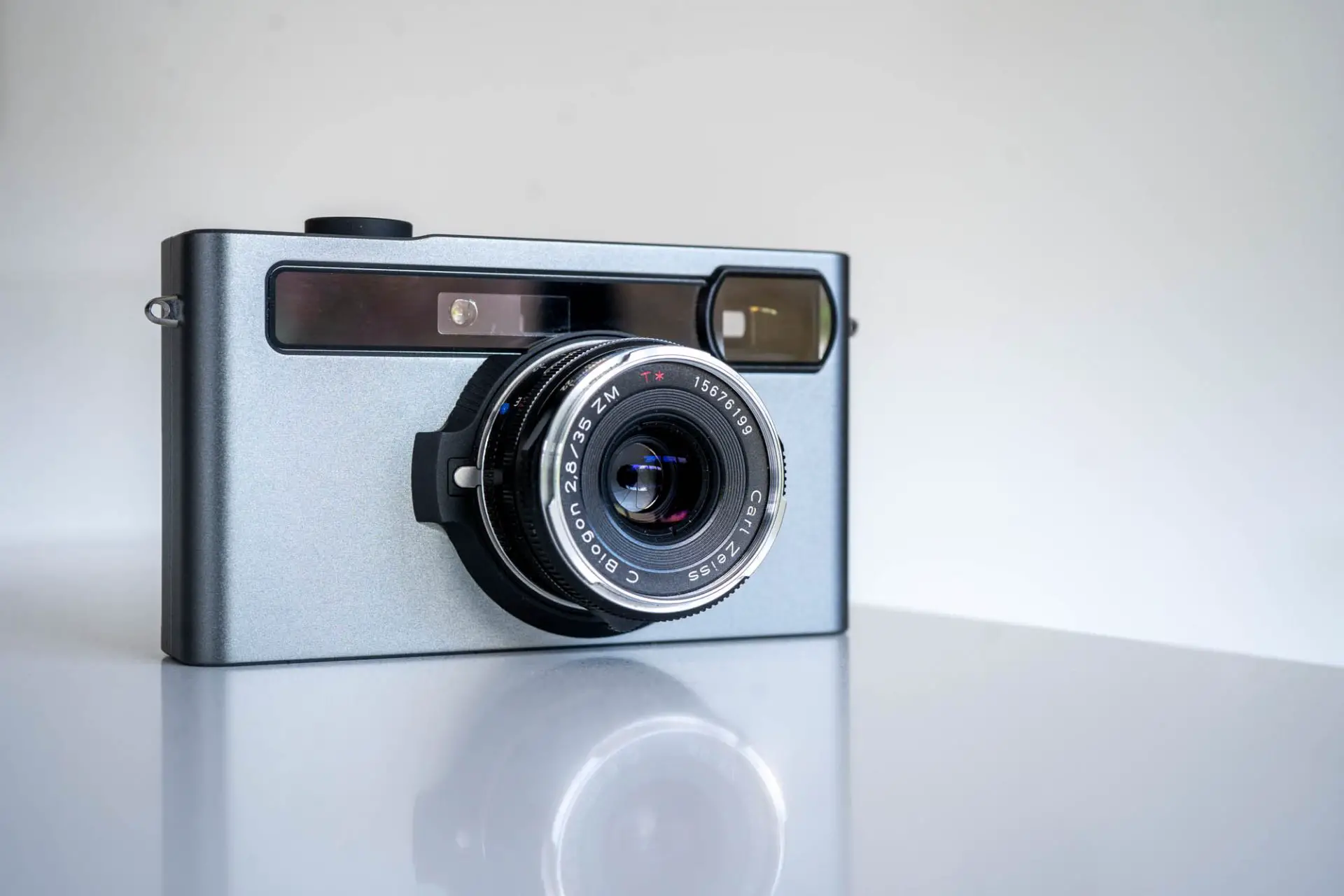








Comments
Tim Bradshaw on Pixii (A1571) Review – New Upgrades and Some Personal Experiences
Comment posted: 10/12/2021
The only one of these that matters or is unique to it is the last one. I'm not a 'full-frame' fetishist for digital cameras: APS-C sensors are comfortably technically better than the 35mm film I shoot most of the time, and in fact I bet micro-4/3 sensors are as well. And APS-C makes for smaller cameras which is good.
No, being APS-C is a problem for me, because it's an M-mount camera. I'm not a very good photographer, so it's taken me a very long time to train myself to 'see' with a particular (equivalent) focal length. That focal length is 50mm on 35mm film, mostly because I was lucky enough to own, from long ago, a Pentax MX with the spectacular 50/1.4 lens. So, today, I have, I think, 5 50mm M-mount lenses. And one 35mm which I never use. All of that, rather large, investment in 50mm lenses is wasted for an APS-C camera, asI discovered with my Ricoh GXR.
For me this would probably mean that, even if I could afford it I might not buy it. (Although just looking at it and the design ideas behind it ... yes, I would).
But it's clearly a very interesting camera indeed, and it's great that someone is actually making a digital camera that doesn't make me feel faintly nauseous (my usual response is 'why are there 9,000 options of which 6,000 are video-related? why is there a special video button eating space on the top plate?'). Also great that it's not spending all its time trying to look like a 1950s/60s film camera.
(What I want now is for these people to make one with the sensor from the most recent foveon cameras in: I've just given in and bought a second-hand DP2Q and it makes lovely images (and is a pretty camera), but the ergonomics are awful. Suspect that Foveon is now dead unfortunately as Sigma don't seem to be making any more cameras with Foveon sensors in.)
Comment posted: 10/12/2021
Comment posted: 10/12/2021
Comment posted: 10/12/2021
Comment posted: 10/12/2021
Comment posted: 10/12/2021
Comment posted: 10/12/2021
Mike on Pixii (A1571) Review – New Upgrades and Some Personal Experiences
Comment posted: 10/12/2021
Comment posted: 10/12/2021
Comment posted: 10/12/2021
Comment posted: 10/12/2021
Immo on Pixii (A1571) Review – New Upgrades and Some Personal Experiences
Comment posted: 10/12/2021
Comment posted: 10/12/2021
Comment posted: 10/12/2021
Comment posted: 10/12/2021
Comment posted: 10/12/2021
bwf on Pixii (A1571) Review – New Upgrades and Some Personal Experiences
Comment posted: 10/12/2021
Casper on Pixii (A1571) Review – New Upgrades and Some Personal Experiences
Comment posted: 10/12/2021
Comment posted: 10/12/2021
Laurence Kesterson on Pixii (A1571) Review – New Upgrades and Some Personal Experiences
Comment posted: 10/12/2021
Rolands on Pixii (A1571) Review – New Upgrades and Some Personal Experiences
Comment posted: 10/12/2021
I can only echo what Tim said about the APS-C sensor. The crop is not ideal. I love 50mm lenses and 50mm on APS-C is not that. I have that issue when using M lenses on X-Pro1. You can use 35mm to achieve similar FOV but think of the bokeh! Ultimately what I'm trying to say is that if you have a good set of M lenses already, then switching to different format can be painful. And it can add to the cost as you might want some new lenses.
I also agree that having a Foveon sensor in a camera like this would be a dream ( that will never realise ). I have a DP2 Merrill and the results are amazing. The rest, not so much.
Still it looks like a very interesting camera and it definitely has a place amongst the other digital cameras. I wish I'll get a chance go play around with one at some point.
Comment posted: 10/12/2021
Tommaso on Pixii (A1571) Review – New Upgrades and Some Personal Experiences
Comment posted: 10/12/2021
Florian on Pixii (A1571) Review – New Upgrades and Some Personal Experiences
Comment posted: 10/12/2021
What I also miss in the article: Since the Pixii has - like the Sigma fp - no mechanical shutter, doesn't it suffer from rolling shutter motion warping when shooting fast-moving subjects, and from color banding artefacts when shooting in energy-saving light?
Comment posted: 10/12/2021
Simon on Pixii (A1571) Review – New Upgrades and Some Personal Experiences
Comment posted: 11/12/2021
JL Williams on Pixii (A1571) Review – New Upgrades and Some Personal Experiences
Comment posted: 11/12/2021
I admit I had had considerable hesitation about investing US $3000 (a lot of money for me) on a camera based on a new concept and built by a non-mainstream manufacturer. Then I remembered I had felt exactly the same way in 2004, when I put up exactly the same amount of money for the then-new Epson R-D1. We R-D1 owners definitely had some ups and downs in the early years (often involving Epson service, or non-service)... but now, 17 years later and after a lot of other camera purchases have come and gone, I'm still using the R-D1 quite happily. It has staying power because it's so straightforward, and I am hoping the Pixii will work out similarly.
Unlike you, I do use the connectivity features regularly -- at least, I do when they cooperate! This is my biggest current headache with the Pixii. Even the Bluetooth connection drops fairly often, forcing me to re-start the iOS app, and the Wi-Fi connection (needed for downloading high-resolution previews and DNG files) isn't very stable. Granted, some of this may be iOS 15's fault! David Barth emailed me that the most reliable way to connect the Pixii to iOS is to use your mobile device in its hotspot mode... but I can't try that because my iPad doesn't support tethering and my iPhone is too old to run the Pixii app. Have you been using the hotspot technique, and does it work for you?
I must say that when it does work, connectivity is awesome. Unlike you again, I do fairly often want to take a recently-shot photo, edit it extensively, and post it onto social media right away. I'm impressed by the Pixii app's ability to bring DNG files from the camera and send them to the Snapseed app, which has robust raw-file editing capabilities, and from there post them onto Instagram... while sitting in a café. I do wind up dumping my Pixii files into Lightroom eventually, but it's nice to have an immediate-access option!
Also: I do shoot a lot in low light, and I've been impressed by what I see from the Pixii so far. My only reference point is my Fujifilm X-T4, and in the ISO 5000 - 10,000 range, I would say the Pixii clearly has an edge. Noise is definitely visible, but it's less intrusive than from the Fujifilm camera, with smoother gradations and nice, open midtones.
Anyway, thanks for providing another Pixii viewpoint!
Comment posted: 11/12/2021
Comment posted: 11/12/2021
Comment posted: 11/12/2021
Comment posted: 11/12/2021
Comment posted: 11/12/2021
David Hume on Pixii (A1571) Review – New Upgrades and Some Personal Experiences
Comment posted: 11/12/2021
Comment posted: 11/12/2021
Comment posted: 11/12/2021
Comment posted: 11/12/2021
Mark Kayuda on Pixii (A1571) Review – New Upgrades and Some Personal Experiences
Comment posted: 11/12/2021
Comment posted: 11/12/2021
Comment posted: 11/12/2021
Comment posted: 11/12/2021
Comment posted: 11/12/2021
Yant Martin-Keyte on Pixii (A1571) Review – New Upgrades and Some Personal Experiences
Comment posted: 11/12/2021
I'm curious have you tried M39 lenses on it?
Comment posted: 11/12/2021
Comment posted: 11/12/2021
Comment posted: 11/12/2021
Ian H on Pixii (A1571) Review – New Upgrades and Some Personal Experiences
Comment posted: 11/12/2021
One to watch….
Karim Ghantous on Pixii (A1571) Review – New Upgrades and Some Personal Experiences
Comment posted: 12/12/2021
I can't remember how I found this article but I'm glad I did! I had forgotten about this camera. The new features make it something I would be interesting in buying for sure. That is despite the fact that the original camera had nothing appealing to me.
The APS-C sensor is a damned good idea. A lot of Leica lenses have terrible edge and corner performance on the 36mm sensor. That includes, surprisingly, the 75 Apo.
Subscribing to Reid Reviews is a must-do before even thinking of buying a digital Leica M kit, or even a Q2. If you think that automatic lens corrections are going to magically fix serious optical aberrations, you are probably still leaving coins under your pillow for the tooth fairy.
One of the first things I looked for in your photos was the rendering of fine details. From what I've seen of both the A7SIII and the A9/II, they are terrible landscape cameras. They render fine details like distant tree leaves very poorly (the A7RIII and IV, and the A1, are perfectly fine though). I would not want to shoot the A7SIII for the big screen, and I wouldn't ever use the A9 outside its core competence (which it does better than any DSLR you could point to).
High ISO is not too shabby. I'm not expecting miracles from a high density APS-C sensor. My main cameras now are Olympus and the sensor is even smaller. I have no complaints. If you want medium format quality, buy a medium format camera.
I haven't worked for a while, due to government restrictions, but my specialty is theatre photography. I eventually will be shooting stills on film sets, although that won't happen for a little while. For years now, I have been shooting Sony APS-C with a 50-135 telezoom. I need the reach of the 135mm. Sadly there are no frame lines beyond 50mm. That is a shame because the electronic shutter makes this camera perfect for shooting rehearsals.
So the only real problem is the lack of frame lines beyond 50mm, and perhaps the lack of wide-angle frame lines. Everything else is either a bonus or a non-problem. I would go so far to say that I would be prepared to buy two of them, given that changing lenses isn't nearly as convenient as zooming in or out.
I don't know if you're familiar with the Red Scarlet 3K? It was a prototype camera that Red was going to launch about ten years ago. It was an integrated camera, with an 8x zoom and a 2/3" 3K sensor. The price was going to be US$3,000, and I was ready to buy one of these to use for some of my jobs, including theatre. For better or worse, this camera never came to pass. The Pixii at least exists!
P.S. Typo report here: "As an extension of this, I also >fine< that the auto white balance can go a bit bonkers sometimes"
Comment posted: 12/12/2021
Comment posted: 12/12/2021
taffy on Pixii (A1571) Review – New Upgrades and Some Personal Experiences
Comment posted: 12/12/2021
Nice review as always. The "less can be more" idea of it appeals to me and in fact I found myself wanting to use my M8 more. The rangefinder experience, regardless of generation, has it's own appeal to a lot of photographers, myself included. I must admit that the overall size, weight and lack of a screen at the back of the camera is a big part of the appeal. How much lighter / smaller does it feel vs your M?
One thing about APS-C (and I guess APS-H) is that there's not a lot of compact lenses for those who want 35MM FOV equivalent or wider for that matter. I know you tend to shoot at lot of 50mm so the 35 Nokton Classic and the C-Biogon make for good matches with cropped sensors. What would be a good compact 35mm FOV lens choice for the Pixii? The Ultron 28v2?
Comment posted: 12/12/2021
Adam on Pixii (A1571) Review – New Upgrades and Some Personal Experiences
Comment posted: 12/12/2021
Comment posted: 12/12/2021
Comment posted: 12/12/2021
Alan Chin on Pixii (A1571) Review – New Upgrades and Some Personal Experiences
Comment posted: 12/12/2021
In my specific case I’m a decades long Leica M film user who was lucky enough in 2011 to be gifted an M9 by Leica when I was part of a project they sponsored — and despite that camera’s poor low light performance even against its own peers, I used it as a front line camera for 10 years, and only retired it when I could put the M lenses onto Sonys with the TechArts/Fotodiox-Pronto AF adapters.
There’s nothing in your lovely review that suggests that one could use a Pixii this way — it just has too many limitations even compared to a 10 year old M9. For $3000 one can buy a used M242 or maybe even newer instead. And no I don’t agree that the Fujis are apples to oranges — that’s apples to apples — APS sensor compact interchangeable lens camera , the direct peers are Leica’s own TL and CL types, Fuji, smaller Sony line, Canon M, and now smaller Nikon Z line, formerly Samsung and Ricoh. ALL of those can mount M lenses with the resulting crop factor. ALL are a fraction of the Pixii price. The Fuji X-E series are small, deliver great image quality in almost no light. Ergonomically they are very similar to this — and I got my X-E3 for $450 used.
I really want to support a company like this and I am not poo-pooing their efforts at all ... but I just don’t see how this would make sense for me or any other working pro, sadly.
Ian Do Carmo on Pixii (A1571) Review – New Upgrades and Some Personal Experiences
Comment posted: 13/12/2021
I do have some questions: Why and when you would take this camera for a walk (over the choices you have) ? Is that possible to make interesting work pictures on it, specially for archival, marketing and publicity? Or would I find more interesting this kind of photos with Fujifilm and their film simulations, *having not owned a digital camera before? (In fact, only owned point and shoot Digitech Sony, Canon, Fujifilm x-40). I’d be interested to see how it performs with 28mm, some thoughts would be nice.
Apart from those questions, it is beautifully designed, a digital m-mount with aperture priority, a luxury found on the Hexar, I am comfortable with that experience.
Seokin Chung on Pixii (A1571) Review – New Upgrades and Some Personal Experiences
Comment posted: 14/12/2021
Huss on Pixii (A1571) Review – New Upgrades and Some Personal Experiences
Comment posted: 14/12/2021
40mm is my favourite focal length, so I'm cool with using a 28mm lens for that.
I am curious as to your comments re the rangefinder patch. Any chance including some pics through the vf comparing it to a Leica?
Mike Watkins on Pixii (A1571) Review – New Upgrades and Some Personal Experiences
Comment posted: 17/12/2021
Comment posted: 17/12/2021
Film(ish) Friday: An honest look at the 2nd-generation Pixii M-mount digital rangefinder: Digital Photography Review on Pixii (A1571) Review – New Upgrades and Some Personal Experiences
Comment posted: 17/12/2021
coenfotografie on Pixii (A1571) Review – New Upgrades and Some Personal Experiences
Comment posted: 18/12/2021
APS-C sensor with an M-lens is really nice on the street. The bigger depth of field will come in handy.
Michael C Jenner on Pixii (A1571) Review – New Upgrades and Some Personal Experiences
Comment posted: 19/12/2021
John on Pixii (A1571) Review – New Upgrades and Some Personal Experiences
Comment posted: 03/03/2022
Question, where do you hold or rest right hand thumb on camera back? Looks like controls and connector exactly where thumb would be. Yet you describe it as good to hold, first thing I saw was stuff, right where a thumb grip should be. (My main squeeze is a Ricoh GXR M Mount, very nice to hold with right hand, as you know)
Regards
JB
Comment posted: 03/03/2022
patrick j clarke on Pixii (A1571) Review – New Upgrades and Some Personal Experiences
Comment posted: 04/03/2022
Pete on Pixii (A1571) Review – New Upgrades and Some Personal Experiences
Comment posted: 07/03/2022
For me redundancy and complexity on modern digital cameras really irks me. I don’t get all the extra buttons and screens (looking at you Sony!). Having a view finder and back screen boggles my mind. That’s why I went with a Leica TL2. Just a (touch) screen on the back and 2 dials, a shutter button, and on/off switch. Super simple. It also feels great in the hand as it’s machined from a block of aluminum. The downside is that fragile screen with it being prone to scratching and cracking if you’re not careful. Also the Leica TL lenses aren’t compact or notably fast. The TL 11-23 that I have on my TL2 has impeccable rendering but it’s comes at a cost. The lens is bulky and slow (F3.5-4.5).
Since the Pixii has no screen and just a viewfinder, there’s less to worry about. Put a nice compact M-lens (considerably smaller than TL lenses with all the autofocus bits) on it and you’ve got a great travel rig! Photo rendering seems to be very nice with excellent dynamic range. Despite the Sony sensor, it looks like Pixii’s processor is more Leica-like.
I’ve read that the build quality on the Pixii is excellent. How durable do you find it? Also since it’s electronic shutter do you notice any wobble or distortion? Have you heard any rumors of what’s next for Pixii? I’m really rooting for them to succeed and continue with this concept!
Tom Freda on Pixii (A1571) Review – New Upgrades and Some Personal Experiences
Comment posted: 02/05/2022
Make it full frame and I could be interested. I suspect most people with M-mount lenses will be in the same situation.
Justin R on Pixii (A1571) Review – New Upgrades and Some Personal Experiences
Comment posted: 07/05/2022
I'm trying to decide which I should go for a first range finder. My biggest concern is I like shooting 35mm for family gatherings and documenting my toddler. Sometimes I cannot be very far away and 35mm on a crop becomes a big narrow for inside a home. I have the 21mm f4 but at f4 it makes it challenging to shoot indoors unless it's very bright. I do have the voigtlander 28mm which is a great option but I kind of fell in love with the odd bokeh the 35mm Ultron gives you. The 28mm Ultron doesn't seem to give the same look.
To be honest I rented the m10 and didn't fall in love with it but it was just for a weekend. But I rented the m10m and I didn't want to send it back. Wondering if maybe the m10r rendering would be more to my liking. I do really like the photo output of the pixii I have seen though. Just concerned about a 35mmish offering for an everyday/scenario lens.
Comment posted: 07/05/2022
Comment posted: 07/05/2022
Comment posted: 07/05/2022
Comment posted: 07/05/2022
Comment posted: 07/05/2022
Comment posted: 07/05/2022
Comment posted: 07/05/2022
Chalifour Bruno on Pixii (A1571) Review – New Upgrades and Some Personal Experiences
Comment posted: 16/05/2022
This new (second) generation, examined and assessed in detail by Hamish, brings several interesting improvements but... if described as "a lot more stable," this implies that it still has got stability issues (exposure, colour), if it feels "a little more complete as a camera", there seems to be room for improvement. The "limited core functionality" and absence of screen may still make it less versatile, usable and interesting than a cheaper Leica CL (APS-C camera with mechanical AND electronic shutter and back screen). The CL, although not a range-finder as the Pixii or the digital Leica Ms are, does not encounter any of the issues mentioned above). For a range-finder an M240 can be found for almost the same price as the new Pixii and offer its owner more possibilities. Regarding the pros and cons of a back screen, anyone can have camera with a back screen and decide not to use it, but needing one and not having one becomes an unsolvable problem.
In conclusion, I can envision this new Pixii as a fun and interesting alternative second camera for anyone already equipped with a more reliable go-to/primary one (especially if one heavily uses and relies on his/her camera for production and income), moreover one needs some $3000 to spare on what remains a surprising and interesting concept camera. But... how many potential buyers of the sort exist? Will this new iteration of this interesting and creative concept be enough to keep Pixii's financial head above water?
What do you think Hamish?
Comment posted: 16/05/2022
William Curwen on Pixii (A1571) Review – New Upgrades and Some Personal Experiences
Comment posted: 22/07/2022
WACON-images on Pixii (A1571) Review – New Upgrades and Some Personal Experiences
Comment posted: 07/09/2022
One thing that is missing for me is the lack of flash possibilities.. I often use just a slight bit of fill in flash with most of my cameras.
Many don't and some do always ;-) But the lack of flash limits the camera a lot in my opinion.
DealsPaws on Pixii (A1571) Review – New Upgrades and Some Personal Experiences
Comment posted: 22/12/2023
Eric on Pixii (A1571) Review – New Upgrades and Some Personal Experiences
Comment posted: 27/12/2023
Just now finding/reading this for some reason. Great Write up. This paragraph particularly hit home:
"When I shoot film, I like the fact that I don’t see the images there and then on the back of the camera. I also like the simplicity of the cameras. When I am shooting digital, I enjoy the immediacy of it, as well as getting something positive from the fact that I can see that I have actually got the shot that I wanted. I actually have no preference for one experience over the other, it completely depends on my mood."
I fully agree.
I also like that Pixii exists and is still around. It is a great concept and it is great to see that they are still working on and upgrading their product.
All the best.
Eric
Comment posted: 27/12/2023